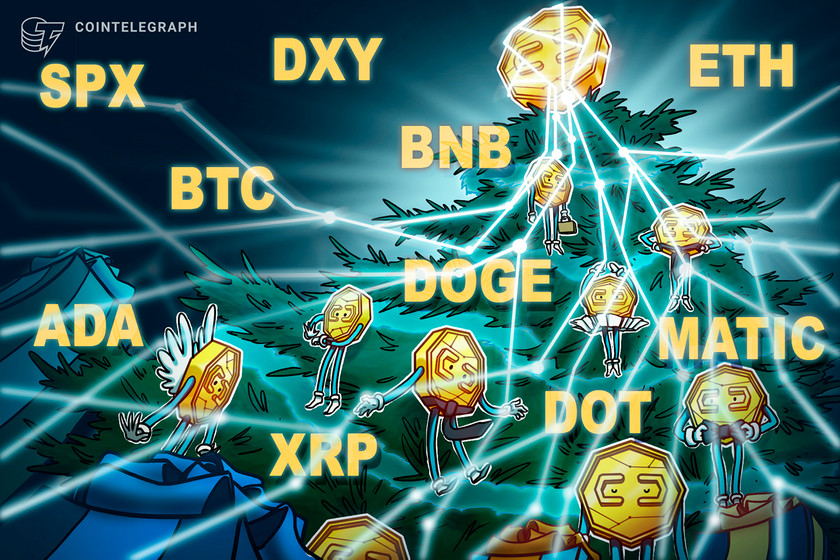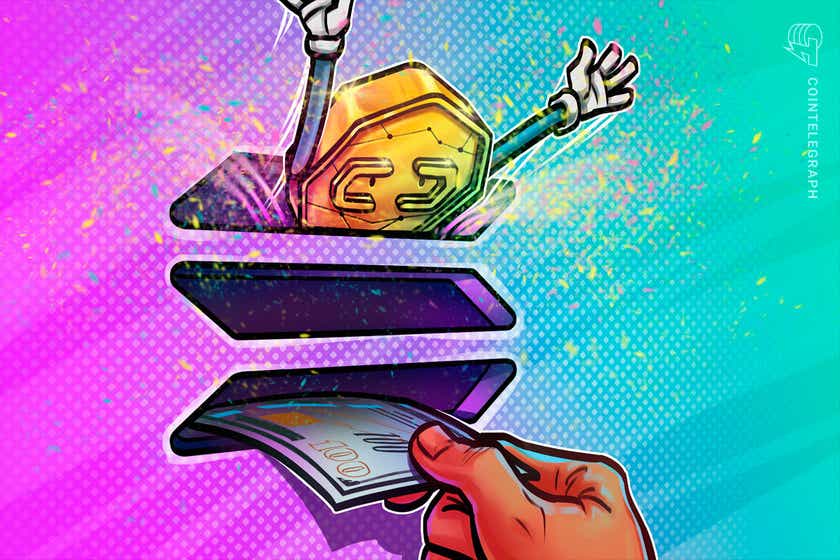Bitcoin price flies solo? Institutional crypto push may be overrated
In the history of financial markets, there are only a few tradable assets that have conquered this frontier. Currently, Bitcoin has the eighth-highest market cap among all tradable assets in the world, including equities and commodities. Among the top 10 exchange-tradable assets, it sits right above Tencent, which Bitcoin flipped on its eventual surge past the $1 trillion mark, below which stands Facebook, which was flipped earlier this month.
Bitcoin is only one step away from surpassing Google and two steps away from silver. Considering the history of commodities like silver and gold, which have been traded for centuries now, Bitcoin’s history is extremely short, starting only in January 2009 as no more than an experiment. Even stocks like Google and Tencent have histories over two decades, while Apple and Microsoft have over four decades.
Was Bitcoin’s final surge organic?
In analyzing the timing of Bitcoin finally smashing this landmark, it’s evident that there were no big institutional announcements leading up to the surge in market cap. The Bitcoin Coinbase Premium Index by on-chain data provider CryptoQuant — when the premium is high, it indicates strong spot buying on Coinbase — suggests that at the time when this breakthrough occurred, the Coinbase premium was negative.
Ki Young Ju, CEO of CryptoQuant, explained to Cointelegraph what this suggests: “The buying power seems mostly to come from stablecoin whales and retail investors, not institutional investors or high-net individuals in the U.S.”
At long last, Bitcoin (BTC) broke the $1 trillion market capitalization frontier on Feb. 19, with its market cap tripling in just three months. This important landmark came almost a year after it tanked to less than $100 billion on March 12, 2020, more commonly known as “Black Thursday” in the cryptocurrency community.

It is also important to consider the proportion of BTC actually in circulating supply before assuming the price implications of Bitcoin volumes. According to research from Glassnode, 78% of Bitcoin’s supply is illiquid, thus implying the supply-demand economics of the asset is only a small aspect of how its price is influenced.
Fortunately, or unfortunately, for the market, Bitcoin’s price is still mostly dependent on sentiment. This is evident in the fact that Robinhood has already acquired more than 6 million retail crypto investors this year alone.

While acknowledging the presence and overall influence of institutional investors, Jay Hao, CEO of cryptocurrency exchange OKEx, told Cointelegraph that a Twitter trend could be responsible for the push to $1 trillion: “This frenzy that included Elon Musk, Michael Saylor, and Senator Cynthia Lummis, could have helped BTC break the $1 trillion market cap without any final push from institutional investors who generally don’t buy when the markets are looking overstretched.” He added further:
“At this point, many technical indicators suggest that BTC was beginning to look overbought as retail traders jumped in fueled by the ‘laser-eye’ trend that stormed Twitter with participants shooting for $100K BTC, including many leading CEOs and politicians.”
Institutional involvement in Bitcoin could be overrated
Crypto venture capitalist Brock Pierce outlined to Cointelegraph that in his view, institutional involvement could indeed be “overrated” but that it is still present as evidenced by their long positions:
“There has been a mix of retail and institutions and other factors driving the markets higher. In terms of the on-chain metrics, we are seeing large amounts of bitcoin leave the exchanges and also miners that are reluctant to sell — both of which serve to reduce the supply and reduce any selling pressure on the market.”
He further opined that corporations are adopting “programmatic buying” as they attempt to reach a certain allocation. Moreover, as indicated by both Pierce and Hao, it is often the sentiment in the market that causes retail investors to get involved, thus causing major price movements in the BTC market.
Ju recently pointed out on Twitter that prominent miners often have private wallets separate from their mining wallets; hence, their power could be greater than what on-chain analysis may suggest. He further clarified the implications this may have on the price of Bitcoin:
“Affiliated miners (whales) seem to sell Bitcoins in exchanges, not via OTC deals. They have personal wallets other than mining wallets, so it’s important to see the trend, not an absolute number. The significant outflow happened when the price was 58k, and it has been cooled down lately.”
Institutions continue to buy the dip?
After Bitcoin breached the $1 trillion mark, it quickly went on to reach its all-time high of $58,352 on Feb. 21. But the very next day, BTC price dropped 20% alongside several other cryptocurrency assets in a correction now more commonly referred to as “Bloody Monday” in the cryptocurrency community. Its price continues to trade between around $45,000 and the previous $50,000 support level.
During this drop in price, it seems that institutional investors have taken it as a green light to buy the dip in large quantities. Jack Dorsey’s Square bought another round of Bitcoin, approximately 3,318 BTC for $170 million. Square first purchased Bitcoin in October 2020, buying 4,709 Bitcoin for about $50 million at an average price of $10,618 per BTC. Square’s motivation to buy the dip in a second round of investment could be driven by the fact that its gains on the first round of investment are around 400%.
In addition to Square, Michael Saylor’s MicroStrategy purchased another $1 billion worth of Bitcoin, an additional 19,452 coins at an average price of $52,765. This investment into Bitcoin comes just six months after its initial investment of $250 million in August 2020.
Now, MicroStrategy owns over 90,000 BTC, which accounts for 63% of its total market cap. Saylor has announced that MicroStrategy “remains focused on our two corporate strategies of growing our enterprise analytics software business and acquiring and holding bitcoin.” Hao further commented on the purchase:
“The MicroStrategy debt offering and subsequent purchase of additional $1 billion of BTC was a massive announcement, although we already know what a huge Bitcoin bull and evangelist Michael Saylor is! […] Institutional investors do not chase trends, rather they wait for corrections to come in and buy at an acceptable price. I expect we will be hearing about more and more institutional activity shortly.“
David Donovan, executive vice president of Publicis Sapient — a digital transformation firm — expressed to Cointelegraph his reservations regarding the lack of regulation, especially because investing in BTC comes with risk and volatility: “Individuals should not invest their money in bitcoin if they are not in solid financial standing as there is no FCID protection for stored bitcoin at this time.”
JPMorgan Chase became the most recent financial giant to cautiously endorse Bitcoin when it advocated in a note to clients that “investors can likely add up to 1% of their allocation to cryptocurrencies in order to achieve any efficiency gain in the overall risk-adjusted returns of the portfolio.” Most would see this as a bullish announcement; however, as the price of Bitcoin continues to struggle below $48,000, it adds to the narrative that the influence of institutional investors on the market could be overrated in the minds of the average crypto consumer.








